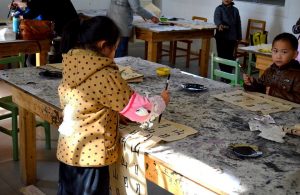Starting to Learn at School
Children in many societies now begin their formal education very early, and many of them start formal schooling around the age of three. These classes, before kindergarten, hold simple lessons. Children are taught to obey simple instructions, begin learning to count and they also learn the letters of their alphabet. It might seem easy to adults, but these are all serious subjects to small children. Each one will need to be taught on a regular basis until the child internalizes the information.
Learning the alphabet is the first step in reading, but it is not always easy for small children to memorize. Educators in this type of class will spend days teaching their students only one letter at a time, and they have a large number of ways to help them remember. Children being taught a letter at this age will be given examples of items that begin with that letter, and it will be shown to them each time it is mentioned. They will often be given a page to color in the letter that are accompanied by familiar objects that begin with the letter being studied.
Numbers are basic to the study of mathematics, and children must know them before attending higher grades. For the smallest students, counting often begins before they ever reach a classroom. Modern parents must be able to teach their children how to count up to at least ten in many areas before they can register their children for public education. Sending them to preschool classes is often the easiest way for parents to accomplish this task, and the learning of numbers is often done in the same manner as learning the alphabet.
Safety is an important factor when it comes to children, so teaching them to obey simple instructions is important. Knowing they will be able to follow instructions gives adults an opportunity to teach them discipline, and it also gives the child an opportunity to further their own education as they learn the rewards for accomplishing their tasks.














